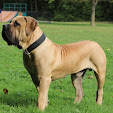Your furry friend deserves the best care, and that includes helping them build and maintain strong, healthy muscles. Whether you have an athletic dog, a working breed, or just want to keep your canine companion in tip-top shape, this blog post is here to guide you on the path to canine muscle building success. Let's dive into these essential tips for unleashing the beast within your four-legged friend!
---
**1. Proper Nutrition**
Just like us, dogs need the right fuel to build and maintain muscles. Ensure your dog's diet includes high-quality protein sources, such as lean meats or a well-balanced commercial dog food that meets their specific needs. Consult your vet for dietary recommendations tailored to your dog's breed and activity level.
---
**2. Exercise and Play**
Regular exercise is key to muscle development. Engage in activities like fetch, agility training, or daily walks that provide both cardiovascular exercise and muscle-building opportunities. For more specific workouts, consider resistance training exercises like weighted backpacks or canine weight vests. Always start slow and consult with a veterinarian before beginning any new exercise regimen.
---
**3. Supplements**
Discuss with your vet whether supplements like glucosamine, omega-3 fatty acids, or muscle-building supplements are suitable for your dog's needs. Supplements can aid in joint health and muscle recovery, especially for active or older dogs.
---
**4. Rest and Recovery**
Muscles need time to repair and grow. Ensure your dog gets plenty of rest between workouts. Overtraining can lead to injury and hinder muscle development. A good night's sleep is just as important for your dog as it is for you!
---
**5. Hydration**
Proper hydration is essential for muscle function and recovery. Make sure your dog has access to fresh water at all times, especially during and after exercise.
---
**6. Consistency is Key**
Consistency is vital in any muscle-building journey. Stick to a routine, whether it's feeding, exercise, or supplements. Regularity will yield better results over time.
---
**7. Monitor Progress**
Keep an eye on your dog's progress. Take photos or measurements to track changes in muscle tone and overall fitness. Adjust their diet and exercise routine as needed to meet their goals.
---
**8. Veterinarian Guidance**
Always consult your veterinarian before starting a new exercise or diet plan for your dog. They can provide tailored advice based on your dog's age, breed, and health status.
---
**Conclusion**
Building and maintaining strong, healthy muscles in your dog is a rewarding journey that leads to a happier and more vibrant life. Remember, there is no one-size-fits-all approach, and what works best may vary depending on your dog's breed, age, and activity level. With proper nutrition, exercise, rest, and guidance from your vet, you can help your furry friend unleash their inner beast and enjoy a life filled with vitality and strength.

No comments:
Post a Comment